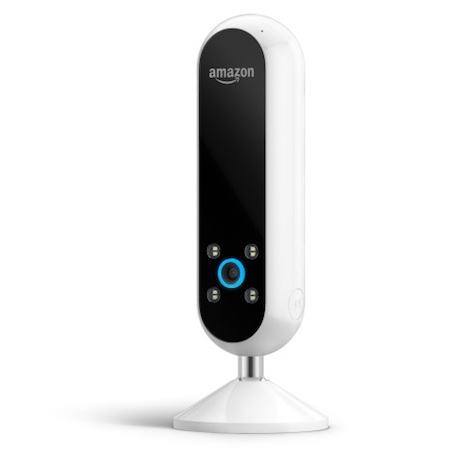NEW YORK – Building good customer experience is all about creating and cultivating the right habits.
This is the philosophy of Forrester senior analyst TJ Keitt, who spoke about the subject at Forrester’s annual CX NYC event on June 19. People are creatures of habit, and building habits that are beneficial both to customers and to brands is the key to success.
"We say customer experience drives loyalty," Mr. Keitt said. "Part of what makes that loyalty possible is that a good CX caters to a habit customers have and want to keep or a habit they want to form."
Building habits
Habits form the core of human behavior. Everyone has habits, whether they are conscious of it or not, that shape the way they think and act.
In Mr. Keitt’s view, it is essential that brands understand this and build their customer experience around it.
As an example, Mr. Keitt points to Borders, the now-defunct bookseller that was once quite popular. Before it shut down, the company was doing quite well among book lovers who enjoyed going into a physical store and browsing the titles on display.
But eventually the company fell anyway. What happened?
"I have a simple answer," Mr. Keitt said. "Borders catered to a bookstore habit long past when going to the store was a desire for book lovers.
"If you wed yourself too closely to a specific habit, you stay anchored to it even when it no longer is needed," he said.

Mr. Keitt uses jetBlue as an example of an effective brand. Image credit: jetBlue
In other words, Borders had cultivated a habit among consumers, browsing through lots of books every now and then and maybe buying one or two, that was not sustainable. Meanwhile, other booksellers such as Amazon evolved with the times, offering new ways to consume books that captured the way consumer habits were changing.
In fact, Amazon’s ability to capitalize on existing habits and to guide the creation and establishment of new habits among customers is part of the reason it has been so successful at building a massive audience of repeat customers.
"Amazon’s CX vision is pretty simple," Mr. Keitt said. "It’s a focus on price, selection and convenience.
"They have a deep database of customer data, innovative devices and a large partner network that supports new interactions," he said. "What's the result of this?
"Customers keep coming back, creating repetitive behavior. That value is so powerful that it overcomes performance snags."
Getting ahead
One of the largest benefits to cultivating these habits among consumers is that it creates a real sense of loyalty.
Mr. Keitt cited Amazon and jetBlue as brands that have honed in on cultivating consumer habits and which enjoy great loyalty from those consumers in return.
Consumers today are faced with a plethora of choices, making brand loyalty and trust even more important for retailers.

Amazon has created whole devices built around the habits it has cultivated. Image credit: Amazon
According to a new report from Euclid, four in 10 consumers would seek out a favorite retailer online or travel further to a physical store if their nearest location closed. Millennials are more apt than their predecessors to follow a preferred brand to ecommerce if necessary, with this generation not as concerned about the convenience of a brand’s physical footprint (see story).
As the ultimate example, Mr. Keitt cited Netflix. While many cable companies have completely lost touch with how consumers watch television today, Netflix has not only been following trends but has been actively creating them with the advent of “binge watching.”
"There's a misalignment, a misunderstanding among cable companies with what people want," Mr. Keitt said. "But Netflix has helped shape consumer habits that benefit them."
{"ct":"S0LSBjiPgcDADcO8OYSqprNmnTYg+giJoaWyaLzJiBbg97e2sBDAcG5bDGKOLH97OURw2VCo7UxvdsMso+MZOK96NQememL3WnLsiPrLIRf50Dm5trM8ba2wadKCp24CcmpnM0dSyvKmccOM1xeJXtiovZIqNxNWIfE+G\/ZeKxk1xYT7BzS8xoSYN1iE1RKfNXGJL\/ofPM5xIRSeSwsTu3ueBPNAAyTTYji0yk\/+dEJMSX9F6LhyEC0qsKG2is5ZAuZ5LB1ptgmGhpQDb6zPu8xD0ghYBM2AATuup3eC4FfBXIJ18Gs8piw68AuRctoBu\/le2NEFUZ3VA88d3TU7oCjF9leJPJGDu2VlRxivtUZJFBj15q\/xnOfeTGD3VAfFhcpRpGoiHM0\/2aM8JdU7KhYpK+\/Job91mU88CuTQRUUr5ryrybwsQfgTXvlxj3DZ40qiGC1p4iVCLHzWekyTuxTnFHD4ZIi4NXussFqUfGt6f4CqLcwhpqFz2Y2dVDjh5rJOOYNXZ82OQPawwRi8oVLyri3sLdMnYoyrhwLt1L9lSL6D0G6T9zshPGLbDfGl6ZRzeJmGPnWcbgu82pRNSVpnCplEU8KeSrbutYZat6KaRHpOK66g8VsoTJkFYxD5YasWkGlEhvwFx75eOpuNjG0mXFCIwqyaAnUMXgbXq6D37rO4liwePiU7u5UEigffXQJgUiN3YKXL\/0p4OLTN1+w6AEgW7XjeZyixVFm2qHvhwd9QtG9oHglBKli5GoZb9M\/KDCo6K554BgNVKdYSxJdz\/FRaJrWQR6OnXItMzBF1fCN1l19Y9yXILinA2obmXA2DmXOWPXZoixwwMHhvPO\/Cjj1N\/xL5r3wEHKCPjfKGB0\/KHCgkPmXtJ1DZnYBaAwEDA7JypXT02VKiUJp3T1Z1ZVhPhhfKhqBqrz4IUCBu+Fnf3MGfTPRupCRhOonHZz8MVIxndFz26vK1mpR5Vhhs5yx5UB08xkDZIhQZwWSsVhMPYq\/o4gC\/epRgG8yc0ZuhC7WxkC6FFvlAFAxHD3x1AVYbA1nDD8V4rXWXlZNRhu6lk21Z61Iyxx2Z\/N1sbL1qUjywvX9+0Bw9\/8xgfTusj07TVFDsmMP0N9xFLkdsoUZvKiRHXfrcU7amb2foT9gIIVUriFZjKSN4BmC7Mrvqeoe7tD5XfbOwhdjWtH3PrYkGLTWdM4c9cudUrvvmFBHz3oqFMG0tvzhmGQj0twNXXYMHQk\/Gv2qrgeF7K9\/PumIsCKTVmtBxfci1w4Ano\/ADEj5QXTRAsQwEjYpivk55clPs2lPbcRn7eUav2RdUOFbeEdolmntciEuSzGGLExqWIAFWugoZurq4r6k8qYBQa87GtiMSuV47BVCFFfGwWaGnkYxNrZ55J9dyC7klWqww3ptt0gv6Gl7XtOL+ifWJdy9fyCT3S3\/hjljSMhnFZA+i4omtKBl0tujTkQbLlMTgYmVV3G75JYjuzUmKT5Xly6Z4MV8F4ZNkFwer0BSdtOK5Ku6JcO183pbWBU9E6AehqJd97rc00zwbOrA8x6aXlqcqHjvncbJCkIDzbTxMVwgqJrc5z1Mw1CY6uT+rp1wMySyU+hthDfhGElqoFi6aTyzLO5WHiIkjHmNXNw62Fza+Cd2iMXhTCDokfR5dq9DJURPAHVDE5XLoXAHzm2+KlcRu9oFiZ\/rRTT6eYMbfMJKSVnSgR0DSr8Qr1y\/orwQoXbR7\/fy8PiA87rcXrUP1mbFl5by4VkWVwJaYVEq9UUCWHSNbZacYP4Ua41SXDEVhLsw9SQXYj2Ev8+9V7Rt0Flfy7VPuwqFZGRVqjpK3XyH\/mFQdyxPV7llMdRd7UpH27YzI2kfhuyLG7BwxeSmXj9cAGmWebsVJmomF+mc9OG1EXR5fHpynyMXfFwZfgliovhLHtkIF8+1QSTkNHZH0ehzO\/XC2ixilIJSlE3O6NoFkkOmZSy0lffTTuKWgXQn7RPgF+SnFI\/I3ljFAM0MOyiya5W4t4StkEIR2RBSs6evIlEefncVmOrsOpOVlMnxrbwUuBD0tXd7tV8guXpzVwMpznbur2EMMnlnkEY9fqYAL0DcHhL\/9HSz7bjtNG1A31QVi+JqbGbcv1o+bdTG1\/v4\/HwSoLqnPlZRvs5pBF6zrN2TnlGV65Gi8ijsYE90DidrADSxuV5O67AZgRioO3MYaJotBNct5vTvKjVmu\/cYBM1cOxegM9ydf39cD7S6jzb74pzoz8PadOtgr37cVRDVNwGMrYqeyXBRtrob8x+PqQsVbtOW9P2UtPh48wlyi2LX5L+g+IUDcrgFN2T7p8Ht3arjSCT6RNbqLsrbFqhlpc8daWXelum6C5bE7OkefzDAbdy9lV+51Irywr0HFEwcgtZrrRdFCvTsvmyxp0P9ykZBX9qBpFykH7sbQ12Zu1WyMIVOSOnCU2t0l4ocBaPGNssgDCtFEuq7hOxJpY+xKnMrimjas82B0PfHdfMQGNf\/Jj2mZzXFeRzCxy1q77Ft5yQxwvsNFG\/A5f0Z5VEDKzVjEJE1pZCc8s8WomxVB9NnrARFurXscFQy6SSoipTml2NCuZhFcHm2oEKaIWnN5xhktl\/Puvn31hk6Te0d+dkMKHZyLFi26sCWho5UCTC7f4dkDqTPzr8b3e1Lwjj4v3EYf87dduU059lY76D72iqfRqzcP2tne5EUr9ofx0S4Ux2vHt0zCuN6jfqHaXnUh3GETJVnigDJANwpR7dXkRMX\/MJ08Shy62jJEWkhotJanrJm3Ke+XHttCwHdSUYfIpVVOk8j8ik5fqkGkwVn0ALrSWSaUcYwIyWmXejTf8W8pNlxxrQWLZ2A4kuDeB8O+4fCeCEeouQg6AKuVMXBEIMp8vWaRMmG9+ExUmqxI2kKy2i6JCy6Pfl+aZ8wXJlCOH2c50J9weel6Hrt2\/aEhBXQ0eE5oGhPrgTeiWV5QBookBkWiQ56L1FCauMSPloX9oH4awFK+5bDeNcXeQqm9lj3rrekbGzJI2dQwN1Vf84Vjav232U4RmtAdinzn6K9\/+HXtsZiGCIqxpDNA+9V5DDI1qIfrrt9CNIeOHACgmxoPVchbGIkRvUjFy5QJb6tge0aBnyOCZ75s0UEnF6n8VTP1sw787CpmaPTFaLbJRH8JHa+Xf+THEEvfNMJcSX+\/YILIA8OWpkFJwCrlAPte8rA3dXjOMiIUQIIavC+UDFgK3h1PMVGoz6SqCRYeUoxClj9T+e57H8M5Biqh291HLzJeMndZgWrufXI6iruQxhfN76N\/VyOohL6TsUQNLJTI0sUzzCC71WL\/3gMw3g2\/9k+w6NpU5BUmUBz\/WMPWi0RPY2ZjMzVaDLjN+UUh4bhL55Nc0dvvrJnOo6GMErc6+Y+bcToSBswVjSM47LFOiFw+p0tyWo0s7JVvXiHRCPjZiMxi6XsJCHIO0LurDRt\/RbgMP3+\/2s1KSZT5sPypvGgwSqAVwDAypd5OF4vDHwWOFMsRezf39RQcLN7ZE7o0UkeNxvC1GUgGXKpJEFJZvk0VdGUWfW2Rt97KkP67kGcgo5bE91SQ+fj02CWvASDPvPJTLLYqjjbeo3l+0hu5UobEO\/mG2NN43HC9vXXfgDOtwl3bkwMAN6LIneBXYDUhNPQYQ7Y68pnn+tDNMD4u\/GzY65eCmGFsJ2Ga+Z5MmjVrt8anL8IuiraM3K1CRHldmKQpjBbvmmnZiNeuv69dqanMFGUv3P3euYSistdRauNBfCA++nh928+KfRAkSKtEezP5HUPg\/kT0zo8wweMvqZoS2BPoHT\/ETv96olgJwA0Xd0dFRcKUiwx0FYCmOSrALOiYtZc5PKC6Mn+rQT+5U4Ru\/3hme\/9xCY6mt\/udH4K79QMg91QZGY4esro0oLQNjcOAeQbzM99REhC305CwPSSeaxByCHat6nC+ZSZPrWCwTY\/q6d53WIqOSKdle63MvlyYW0TPfVq6XGCk6pstEESGbU680FFfoEuAFFBsnEnuV9VlC8AVDUm2II+0ixRbroxJrKHsqrBMmRg7vPiscNs2XM1zcs\/3g7Cu4XAexrbpa\/47Qv9YY\/\/\/mipIXZ+NKPDrs1Nglp67Y7pIFtI7bfTg1HgC5oWMSNHs8ozfL7M5CxCKwJYMyNofJh8XML4EXiFlHp3TL1ZBYXFlpmGJTQXARnPNr2SneFKZ1Iz\/PtZ3fxuIq7QlTxpiyFA0Md3YR0oKdwL1xcgj1BOiTOX7TpwFGeHGzQ7Ol8xhoKHl9axA++idZ+wD9DyU33EU7esqYW5efEz48cvYMlUOPKsSOMPo4nJaB0rS4QpQWoCc1Nqo+rrv3ivDibxYFQ\/tCr+e1eW2QehWA8d3qPsfQWdXvjN7vZLIkUOh0YdU\/Ut78tCEgCt43ARC57WC\/ghi78MMyVOQ8+hXQSNIj3v9\/fMMDt2sC78ETDXcgV95AtfR418cgWIkssl8S4Op\/OlRAKIgXLfYsD38Vg8iFIi5QOnjsgBJKG6eS9meq9XIIHcrtsuK3Yfo\/a6YbOHC0yyjDk1mC0hRHk0KRmI8aWteyL2osR24YCAbB+YNTGdWvhGfM63Fw5i095MEaDfcmNat+\/a5krvT7KdP\/gLgXob6jrpdtchfjCMl\/yfjRnXtbETlaCuuHXBcmADir9U4jkvXBWR9+VEmjWqjjJUVtr4j5NvHDT9ZXKsHeR8U0K611DYY9id+Wuc8WX8CnMlxVV69yeKBc9AvwsSEkQx4DZAZX\/UmNZt4p2t2rSSoh95kfhFqonspiDJiOILkeJPy\/8MUJn5nwxOsfnULTpH2slDjhox9yYBTaZheSk80jUeTCFhBT259JOsinaFmcOgHkE2Pn7x+e2JAcjynyNhji2S1JFeWKxy0PJ2ksP0z4avlrYRGdJzhFEw3ZliDxUVMih8p6DKy5H\/SLT9axtMTkS7DzwWDAeph7iTVo4g0VWp0eyIyYPvJZjiYdI3sKKLGunybYbvOYef9VvzJZP6r3x4ZQVIm9w5GTJDN0wVdXhPwJWalUnkFF3bY+C+Teg6c\/13lMov34VMjpwWL59rAAm1kbJ890wn+riDRupf\/bZNVsJQroBgzrEV1HJ\/6YHCR3XCKXZPGny28P9kmI0eKy8RJfNDp4F6wucnN0VVkIgIROPz012eOoIIlPuLB7aBotz1gdBjl1Xyv3PpIGye+goRSXbI2CeNGNMG4xIqftwg1Q9HgV8EY3dtu+nzJOEu18MwKz8ioNU5YtY0UIWrJv2EgMrhGzotykf\/It3xiLP+snmmoFR4++xhG0+94dBsNOMTCy+cvfeY\/63ah7wYmyj1+PXUnGFc37WKwYJeDy1MSHDRcYm8fWsj7Rc5EptylTV31Ki4w0KawYZeZfZubD0P8CEvRHAwaO5TyOvAyU6hrq3EKv6koPxvW3MeL4IsqyQcIe1QjrVTvvAZ0iOljzyd4rffqfbDc4SKFjkFoWMSaxyeouTzohB5sHICfS\/AA7juuWqiqvpaG0Om92yftl+1oMSVtYz54Lk6QLJglcqBSo9mbZqPDg6qnSU48NQZ6iVraEEDTQxOSNwzlsjMyGmdYokhtrg6uzU8Pk+Gmg7GS2ALzX+JCN1EKJVfSB5jtSfaP7ecp5BA53JIOXiIIoQwh0Xt9DWai12moz\/\/JZ+lzRS\/U6kgtbGL0N23WN4nr\/YzvcfgMxKVs8H\/+PyOmdnubsKOMnjFPRsEdR4o8zrb1W6gCNpyY\/KUVm4TaL2pmbmyGmoKCpc1RentGCCxpvWv6zlHUholz5vXoQxoSwhWOKME8Ko0EY+EYUL1I70Y3E7uPmPbrqHj+cfxuXCOqzWGPx8XSgCdUyyyOvMWnF3sTt+TvPNBDMexGzPJHJB9K2cmIBJXFh5graSy7GeHXaXPle9ZCY0CLIXGPUkDZZd159Zp+YmXvXB2lyAv6NqPWfh0UThVRUfvNoXFRNHXYHpuo1ZL8L13Cc1Lsy1hqyZ7+tc0RWatHmQwJwen6AbmLshb95CCpQeQIHSw4RKk3+H5rKwOw9aLWQrxjZCPcXSvxoFq62GP5Scsyjz5N+D5fzg0t78v3TELStsgkqfks7crmFr4QUwolRTP3Uq6dNAFWYh3ka\/ZIpA70uyfgnAi8NRzkF47yM67SWzJ+VAn+Equ0tU1FTHZyV+UNY9xeE\/DNlzTEQdxo32IrXWJ7PeEmC3eAqgKmH8dh9efv70tWVwHqzkJyXvVjAcrfQ7iIIAMkSw+oWT\/v1Wzop6tcPAbWVBRwh7OeCmz652EYYRJYgpG6bhR1205GPadD5EYvv3Nk0IaD+hVMnw01IOETJzTbxKX7o\/I4Bi\/XhQxyh3CvMIllgXbWarkPYQFRW5QeFMIVrI\/4fO5RW7gCBorLAUhxrXPA6L6DuLE4YPyLIHKMpvDhPCtNVW6Jx2iks5VNo750HJpRVJXlztg3Lz0E5yH3d8eH1AOKXU0pjQIOpqMGkO98jHKkjc31pvkFieyZylzGnYxfrD0UooSWRyVig5e+htHIVczPDZChorNuAXFsxwWzo7rhnTX1UJR3jKXt0qpjV+Nt\/XvtdlU7qQcVwIJU6oc9UMJ01QiKnTdhxVWK2kQtM0xG64DjDognu6vlMEzZYhlEGD5wd+twkTlRGgKbYKZap29dDfkPWx\/2KnjNUIYhbM2iZxuOr4sNzUPwh6THUSSDa7RaTmCLJR6+otRaCIho","iv":"a1a807293360fc92895e98b25020d724","s":"61333e63f5fa4280"}

 Brands must follow trending habits but also create their own. Image credit: Amazon
Brands must follow trending habits but also create their own. Image credit: Amazon